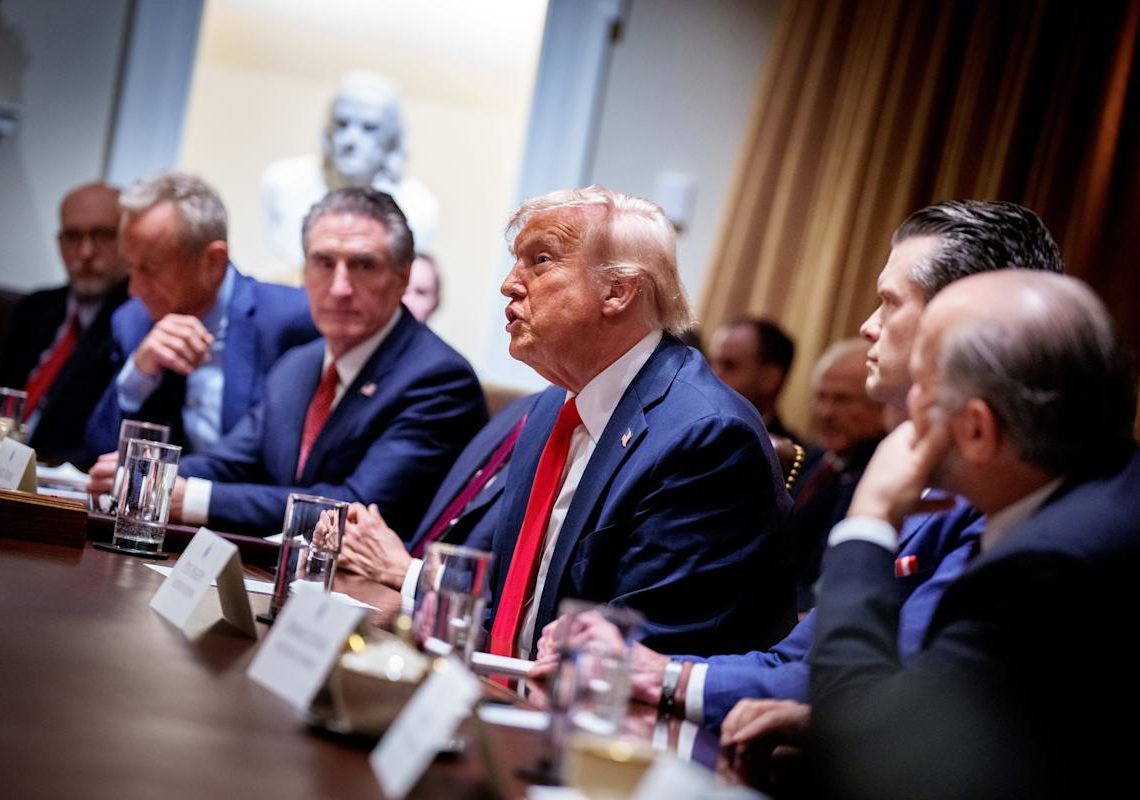WASHINGTON – President Donald Trump unveiled a budget blueprint with $163 billion in spending cuts to non-military programs that mirror the reductions he’s made from firing federal workers and dismantling U.S. government agencies.
The proposed cuts for the year starting Oct. 1 span an array from the environment, education, foreign aid and health care. Trump’s billionaire adviser Elon Musk and the so-called Department of Government Efficiency have already targeted many of those programs, which the budget aims to make permanent even as the world’s richest man plans to step back from his administration efforts.
But the May 2 proposal comes after courts have blocked many of those cuts. Even Republican lawmakers who lead Congress have begun voicing concerns about cutting some of the rejected programs.
More: What to know as Congress starts working on Donald Trump’s ‘big beautiful bill’
The Defense Department’s budget would increase $119 billion to top $1 trillion, with the goals of strengthening security, deterring aggression from China and revitalizing the U.S. industrial base. The Department of Homeland Security would receive an additional $43.8 billion to secure the border as part of a multi-year commitment of $175 billion, under the Trump budget plan.
Overall, the budget lays out $1.7 trillion for Trump’s discretionary priorities, which includes the 10% drop to $1.45 trillion for non-defense programs from the amounts approved this year. But the figures are proposals rather than set in stone for the next fiscal year starting Oct. 1. Congress will determine spending levels – which Trump so far has treated as ceilings rather than requirements – during debates that could last until the end of the year.
Lawmakers will be debating tax cuts at the same time, which will complicate all the discussions. Trump has proposed extending tax cuts from his first administration, which would otherwise expire at the end of the year, and a slew of new proposals costing trillions more dollars such as no longer taxing Social Security benefits or tips on service jobs.
Here’s what to know about Trump’s budget blueprint:
Trump wants cuts to programs he’s already ordered dismantled
The agencies facing proposed reductions include the Environmental Protection Agency, the Energy Department, the Department of Education, the Department of Housing and Urban Development and the Department of Health and Human Services.
Trump’s administration has already moved to dismantle agencies such as the U.S. Agency for International Development, the Consumer Finance Protection Bureau and the Department of Education. Trump has also fired tens of thousands of probationary workers or staffers at agencies such as Health and Human Services.
But judges have temporarily blocked some of those moves, ruling they were arbitrary or not carried out correctly. Trump is appealing many of those decisions and voicing confidence his decisions will be upheld at the Supreme Court.
What the Trump administration means for you: Sign up for USA TODAY’s On Politics newsletter.
Spending cuts sparked protests before budget release
Protests against Trump policies erupted nationwide May 1. Organizers accused the administration of prioritizing profits for billionaires and called for investing working families by fully funding healthcare, housing and public schools.
“It’s a clear split screen between the priorities of the Trump administration and what regular people want and need,” said Lisa Gilbert, co-president of Public Citizen, a consumer rights advocacy group and a co-organizer of the Washington rally.
Bobby Kogan, senior director of budget policy at the left-leaning think tank Center for American Progress, said the proposed budget is “far more extreme” than cuts proposed during Trump’s first term.
“It is impossible to achieve cuts that large without obliterating core government functions,” Kogan said.
Republicans have begun questioning Trump’s spending priorities
Trump’s fellow Republicans who control Congress largely remained silent over his layoffs and dismantling agencies. But even GOP representatives have begun to voice concerns as they get to work on the details and trying to turn the president’s efforts into law.
“Look, no president – and administrations – don’t get to dictate what’s going to happen here. Congress is not the Army,” Rep. Tom Cole, R-Oklahoma, who heads the House Appropriations Committee, told reporters May 1. “The president is the president, but not the Commander in Chief of Congress.”
More: Lawmakers warn Trump he can’t ‘pick and choose’ what to spend from funding bill
Sen. Susan Collins, R-Maine, who heads the Senate Appropriations Committee, said the country’s leadership in biomedical innovation would be threatened by Trump’s proposed cap on reimbursement for research overhead. National Institutes of Health grants and contracts support 1,468 jobs and $286 million in economic activity in her state alone.
Trump said this week that he would propose a military budget of more than $1 trillion. Tariffs on imports from nearly every country will help boost revenues and offset his plans to cut taxes, he said.
The Senate deadlocked April 30 and failed to approve a resolution seeking to halt Trump’s tariffs as the Commerce Department reported the economy shrank during the first three months of the year. Three Republicans − Collins and Sens. Lisa Murkowski of Alaska and Rand Paul of Kentucky − sided with Democrats on the measure.
The House narrowly approved a spending blueprint that aims to find $1.5 trillion in spending cuts before Trump released his proposal, despite the defections of two Republicans who joined Democrats in opposing the plan. Reps. Victoria Spartz, R-Indiana, and Thomas Massie, R-Kentucky, argued the resolution didn’t cut spending enough.
This article originally appeared on USA TODAY: Trump’s budget proposal aims to cut $163 billion: What to know
The post Trump budget proposal aims to cut $163 billion, mirroring DOGE plan appeared first on USA TODAY.



